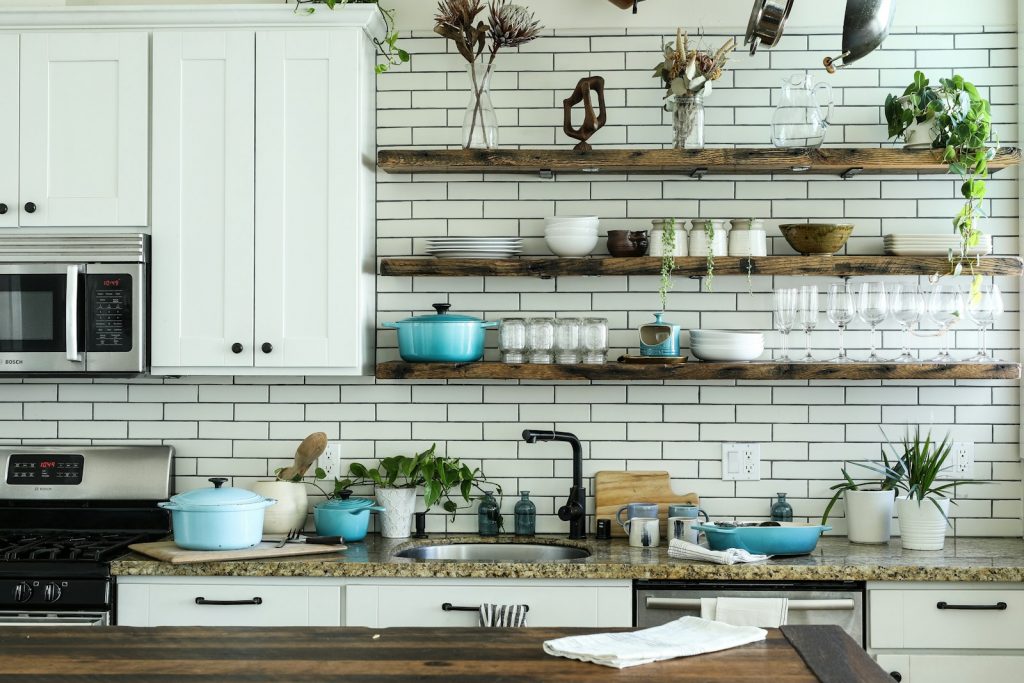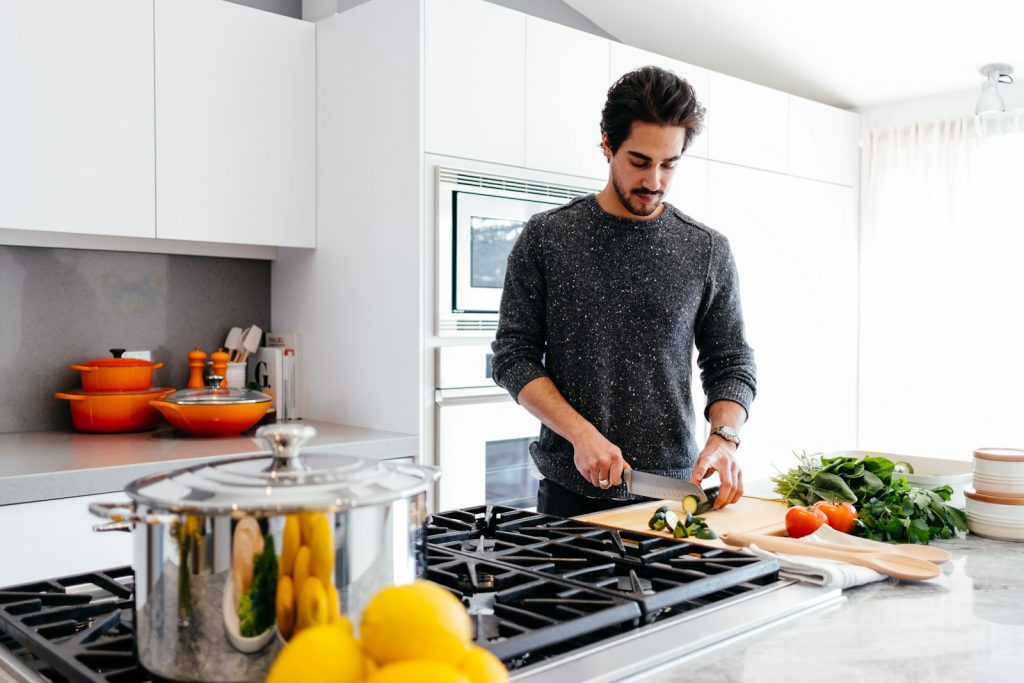Looking for a fun, hands-on way to make your kitchen more eco-friendly and reduce single-use plastic? Making your own DIY reusable food wraps is a fantastic project! These versatile wraps, often made with beeswax or plant-based waxes, are a sustainable alternative to plastic cling film for covering bowls, wrapping sandwiches, or keeping produce fresh.
This simple eco kitchen project is perfect for beginners and even a great activity to do with older kids. Not only will you cut down on plastic waste, but you’ll also add a touch of handmade charm to your sustainable kitchen.
(Remember, reducing single-use items is a big step towards a greener kitchen! For more ideas, explore our “15 Easy Eco-Friendly Kitchen Swaps to Reduce Waste Today” and get the bigger picture in “The Ultimate Guide to an Eco-Friendly Kitchen (for Beginners & Families)“.)
Why Make Your Own Reusable Food Wraps?
- Reduces Plastic Waste: Directly replaces single-use plastic cling film.
- Keeps Food Fresh: The breathable nature of wax wraps can help keep certain foods (like cheese, bread, and vegetables) fresh for longer.
- Cost-Effective: While you can buy pre-made wraps, DIYing them is often cheaper, especially in the long run.
- Customizable: Choose your own fabrics for a personalized touch.
- Non-Toxic: You control the ingredients, avoiding potential chemicals found in some plastics.
- Washable & Reusable: Simply wash with cool water and mild soap, air dry, and reuse for months.
- Compostable at End-of-Life: Once they’ve worn out (typically after 6 months to a year of regular use), cotton and natural wax wraps can be composted.
What You’ll Need:
The most common method uses beeswax, but plant-based alternatives are available for a vegan option.
Ingredients & Materials:
- 100% Cotton Fabric: Light to medium weight, tightly woven cotton works best. Old sheets, shirts, or quilting fabric are great choices. Wash and iron it first.
- Beeswax: Pellets or grated beeswax are easiest to work with. Source it locally if possible!
- Vegan Alternative: Candelilla wax or a blend of candelilla, soy wax, and a little plant-based oil (like jojoba or coconut) can be used. Plant-based waxes can sometimes be a bit stiffer or require slightly different ratios, so you might need to experiment.
- Optional: Jojoba Oil: Adds flexibility and stickiness to the wraps. A few drops per wrap.
- Optional: Pine Resin (Powdered): Increases the “cling” factor significantly. Use sparingly as too much can make wraps overly sticky. This is more common in commercial wraps and can be a bit messier to work with.
Tools:
- Pinking Shears (Optional, but Recommended): To cut fabric edges and prevent fraying. Regular scissors work too.
- Baking Sheet(s): Large enough to lay your fabric flat.
- Parchment Paper: To protect your baking sheet and iron.
- Iron: An old iron is best, as some wax residue might transfer.
- Grater (if using a block of wax)
- Small Paintbrush (Optional): For spreading melted wax evenly.
- Tongs or an Old Spatula: For handling hot fabric.
- Clothesline or Drying Rack: To hang wraps to dry/cool.
Let’s Get Making! The Oven Method (Most Common):
This method involves melting the wax onto the fabric in the oven.
- Prepare Your Fabric:
- Wash, dry, and iron your cotton fabric.
- Cut the fabric to your desired sizes using pinking shears or scissors. Common sizes include:
- Small (approx. 7×8 inches): Good for covering small bowls, ends of cucumbers, or small snacks.
- Medium (approx. 10×11 inches): Ideal for sandwiches, cheese, or medium bowls.
- Large (approx. 13×14 inches): Useful for larger bowls, bread, or bigger vegetables like celery.
- Preheat Your Oven: Set it to a low temperature, around 185-200°F (85-95°C). You want the wax to melt, not to cook the fabric.
- Set Up Your Baking Sheet: Line a baking sheet with parchment paper. Lay a piece of your cut fabric flat on the parchment paper.
- Apply the Wax (and Optional Ingredients):
- Evenly sprinkle beeswax pellets (or grated beeswax) over the fabric. Don’t overdo it initially; you can always add more.
- If using jojoba oil, add a few drops scattered across the fabric.
- If using pine resin, sprinkle a very small amount.
- Melt in the Oven:
- Place the baking sheet in the preheated oven.
- Keep a close eye on it! The wax should melt completely in about 4-8 minutes. It will look wet and saturated.
- If you see dry spots, carefully remove the sheet, sprinkle a little more wax on those spots, and return to the oven for another minute or two.
- Alternatively, once melted, you can use a dedicated paintbrush to quickly spread the wax for even coverage while it’s still hot (be careful!).
- Remove and Cool:
- Carefully remove the baking sheet from the oven. The fabric will be hot.
- Quickly and carefully lift the fabric off the parchment paper using tongs or by its corners (it cools fast!). It will be pliable.
- Wave it gently in the air for a few seconds until it stiffens slightly and the wax sets (this happens quickly, within 30-60 seconds).
- Hang it on a clothesline or drying rack to cool completely.
- Inspect and Touch Up (If Needed):
- Once cool, check for even coverage. If there are dry spots or areas with too much wax (making it overly stiff or flaky), you can briefly return it to the oven on parchment paper to re-melt and redistribute, or use the iron method below for touch-ups.
The Iron Method (Good for Smaller Batches or Touch-ups):
- Prepare Your Fabric: Same as above.
- Set Up Your Ironing Surface: Lay down an old towel or thick cloth to protect your ironing board. Place a sheet of parchment paper on top, then your fabric, then sprinkle with wax (and optional jojoba/resin). Finally, place another sheet of parchment paper over the fabric. You’re creating a parchment-fabric-wax-parchment sandwich.
- Iron: Set your iron to a medium heat (no steam). Gently iron over the top parchment paper. The heat will melt the wax and saturate the fabric. Keep the iron moving to distribute the wax evenly. You should see the fabric darken as it absorbs the wax.
- Cool: Carefully peel back the top parchment. Lift the wrap and wave it to cool, or hang to dry.
How to Use Your DIY Reusable Food Wraps:
- Use the warmth of your hands to mold the wrap around the top of a bowl, a piece of fruit, cheese, or a sandwich. The wrap will hold its shape as it cools.
- Ideal for cheese, vegetables, bread, baked goods, and covering leftovers.
- Avoid using with raw meat or fish due to the difficulty of sanitizing them with cool water.
Caring for Your Wraps:
- Wash: Rinse with cool water and mild, alcohol-free dish soap. Use a soft sponge if needed. Hot water will melt the wax.
- Dry: Air dry by hanging them up or laying them flat on a dish rack.
- Store: Store flat, rolled, or folded in a drawer or basket.
- Refresh: After several months of use, if your wraps lose some of their stickiness, you can refresh them by re-melting the wax using the oven or iron method (adding a tiny bit more wax if needed).
Enjoy your new, handmade, DIY reusable food wraps! This simple project is a satisfying step towards a less wasteful, more sustainable kitchen.


